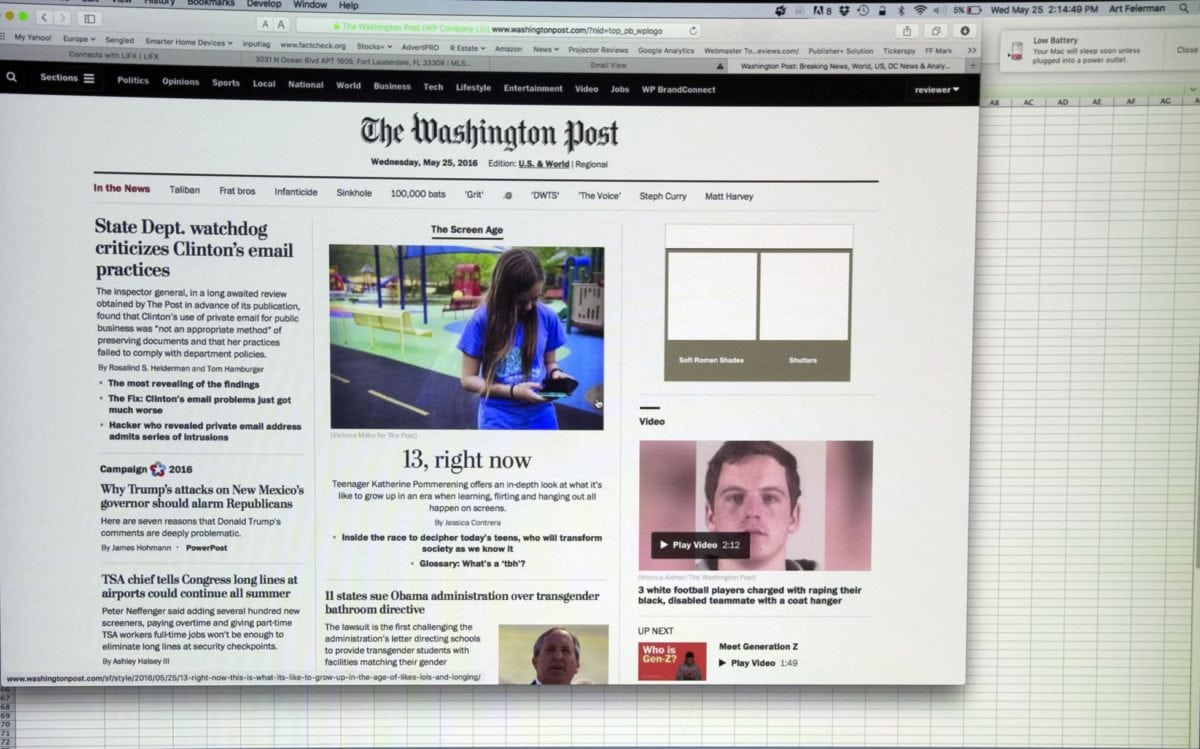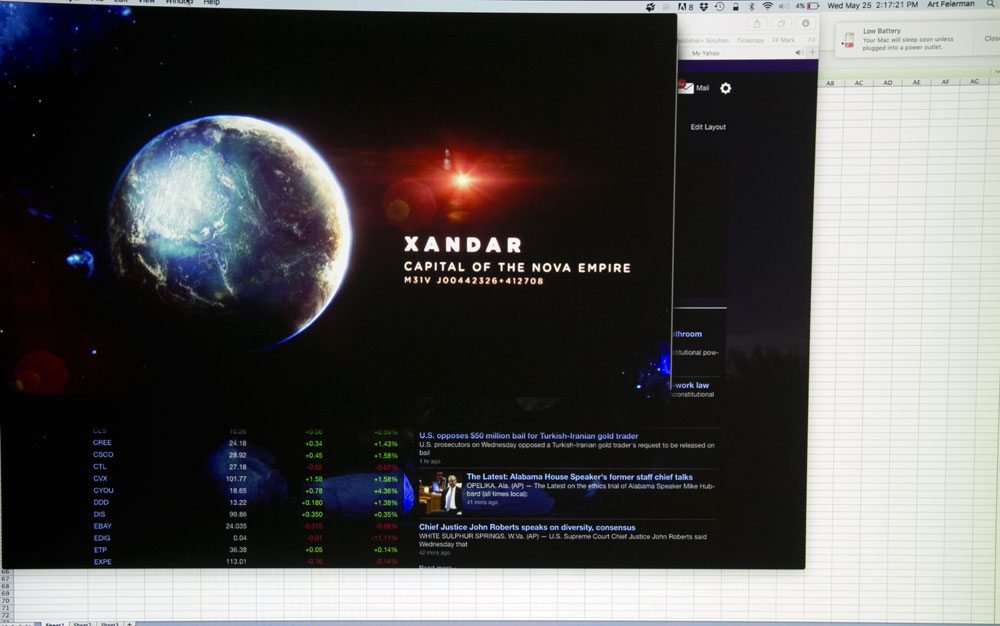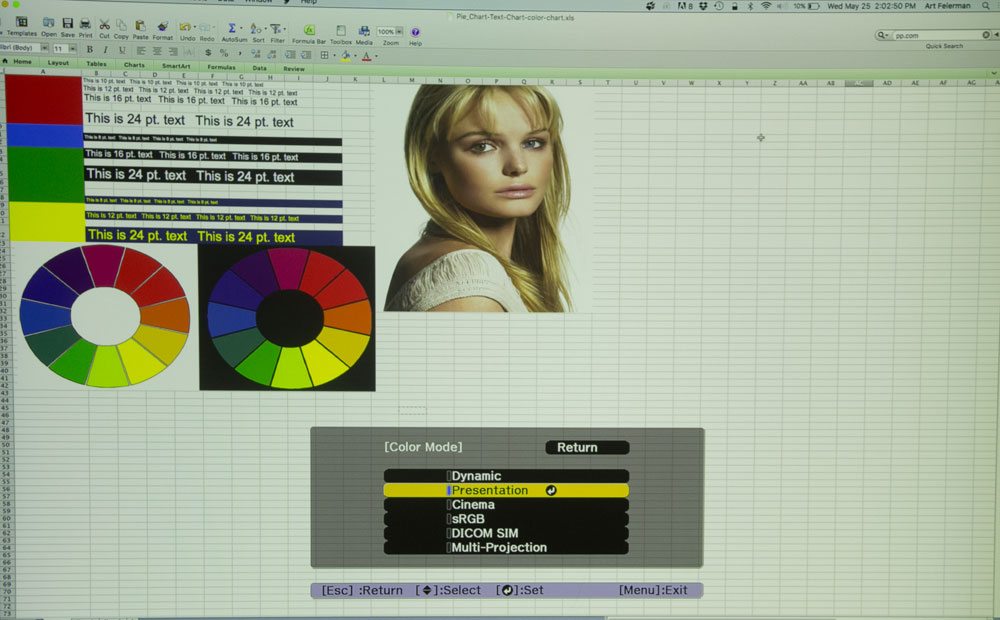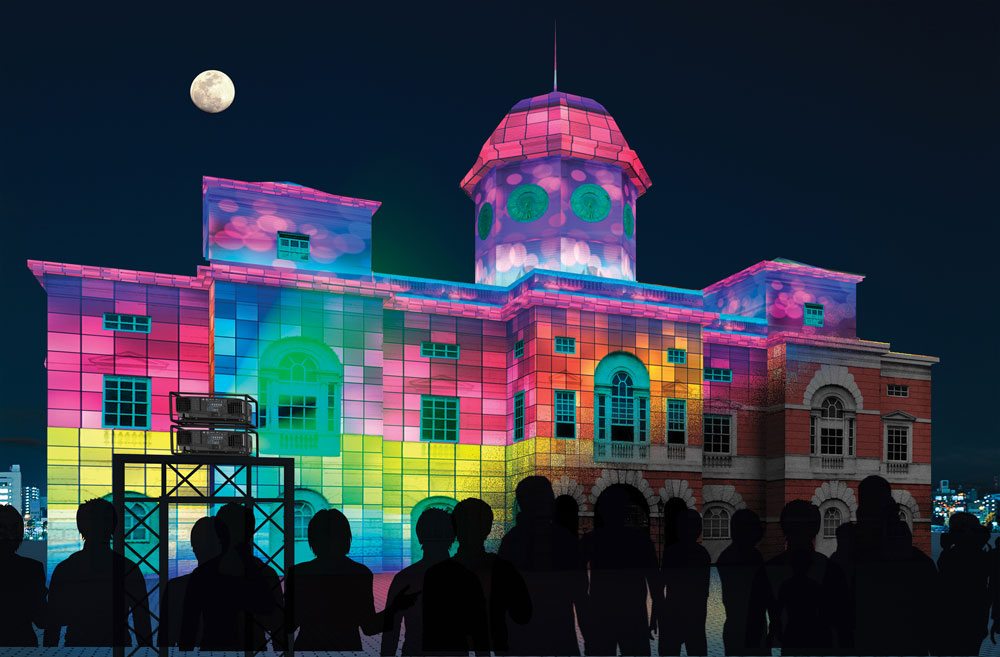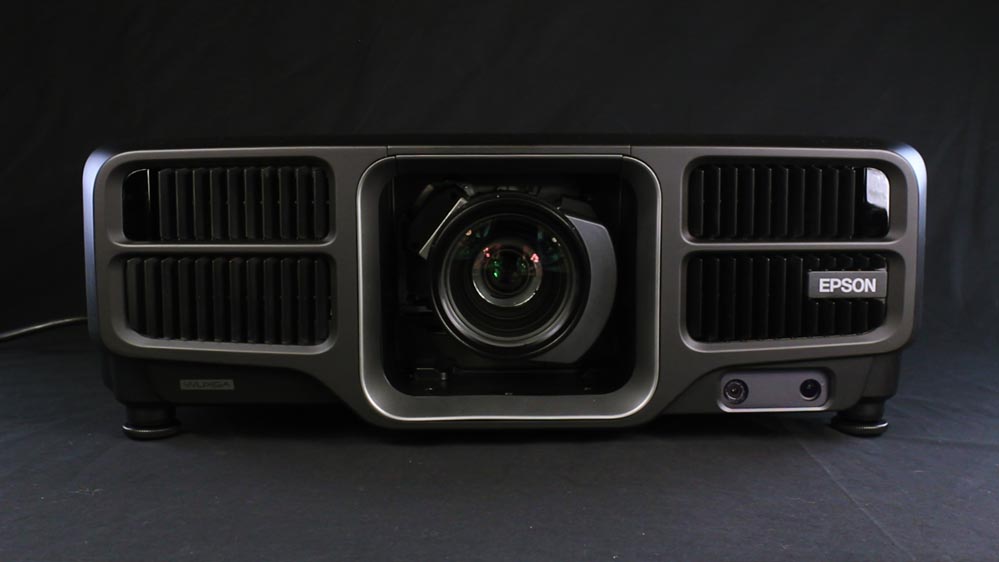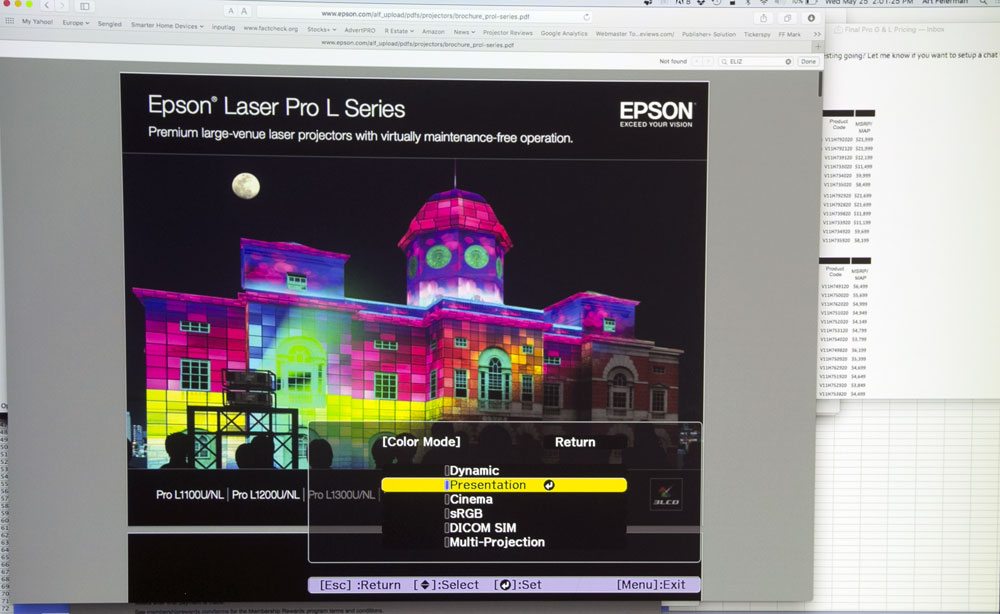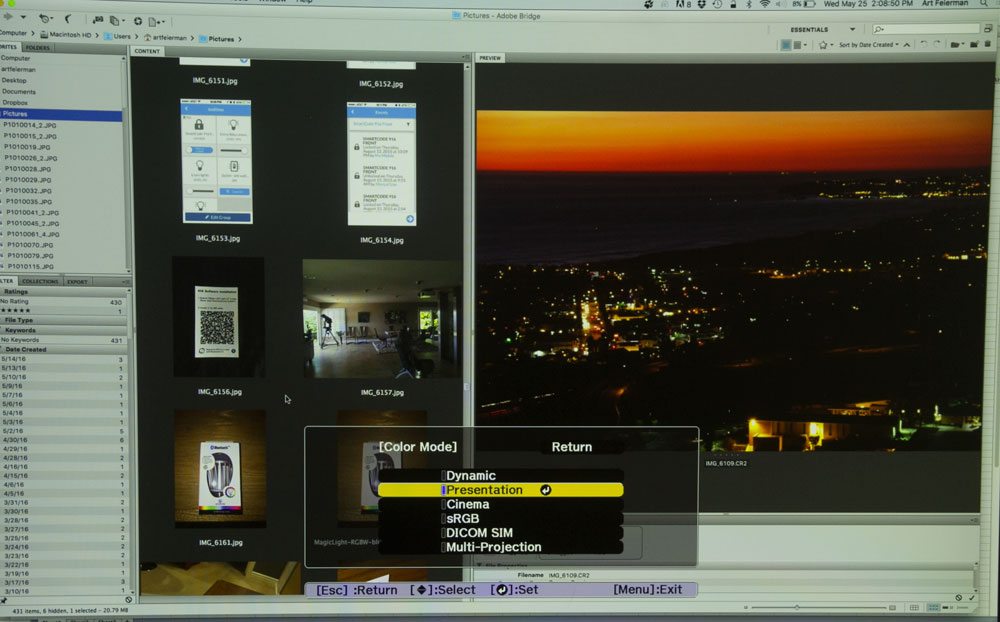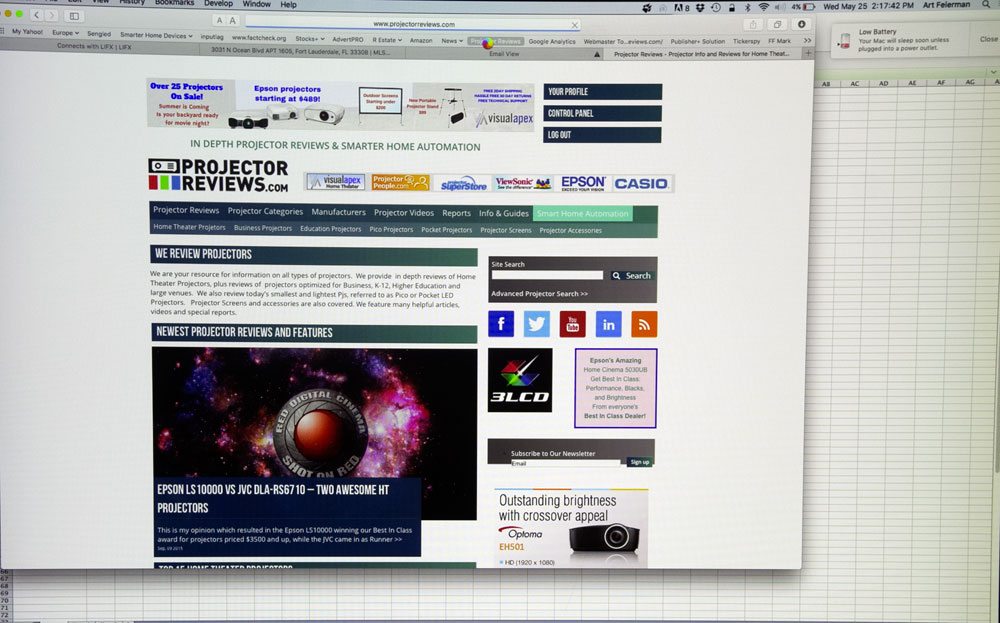Epson Pro L1500, L1505 Highlights
Time to summarize, which means restating the obvious, if you've already perused the rest of the review.
The Epson Pro L1500 and Pro L1505 are the current top of the line of Epson's L series of lasers. They offer 12,000 color, and white lumens!
Because they use larger LCD panels than the less expensive L series projectors, the throw distances are a bit different for each lens, and these two, the L1500U and L1505U will not work with Epson's new ultra-short throw lens. There will be a much more expensive "flagship" laser projector shipping this fall, although it's in a bit of a different class, weighing in over 100 pounds (over double these two), and huge by comparison, not to mention the expected right around $100K price tag, which is far more expensive than these two, which list for $21,999 with the standard 1.6:1 zoom, or $21,699 for the option without a lens (UNL designation).

This is our top regular award for projectors. In addition we offer additional awards in our special reports
These Epson projectors are loaded with features, support for not only the 4K protocols and their pixel shifting ability, but support for edge blending, projection mapping, portrait and off axis mounting, multiple projectors can be stacked to increase brightness drastically, lots of fully motorized lenses to choose from, Lens Memory, and more. (The Pros list below will add a whole lot more items.)
Networking is the usual "advanced" variety, with support for protocols from Crestron, AMX, Control4, Extron and more, and all the capabilities that implies (messaging, remote broadcasting, scheduling, monitoring, etc.), and let's definitely not forget the Auto Calibrate feature, which can be a wonderful ability especially in edge blending environments, but anytime color accuracy is highly critical.
Epson L1500 and L1505 - Value Proposition
There are any number of high brightness laser projectors out there today, from the likes of Christie, Barco, Sony, NEC, Panasonic, Digital Projection and a few others. Other than the prohibitively expensive (for most applications), high brightness Sony laser projectors, none of the others are true 4K nor do those others offer the ability to both accept 4K commercial (copy protected) content, nor use pixel shifting to take advantage of that content to provide a visibly more detailed, and sharper seeming image than a standard WUXGA projector can resolve.
The short version, Epson vs. Direct Competition - other 2K Laser Projectors
- The Epsons are much brighter than similarly priced competitors (which are all DLP projectors)
- They can handle 4K content, and by using pixel shifting enhance the detail and perceived sharpness compared to standard 2K projectors
- They have as many color lumens as white ones for best color handling (unlike single chip DLP projectors)
- The L1505U and L1500U do not have an ultra-short throw lens (but you could buy any of the less expensive Epson lasers which all do)
Although there are many features we've mentioned, it's the 4K content handling (including HDMI 2.0, HDCP 2.2, support for HDR, BT2020 and DCI), that sets it apart from the vast majority of WUXGA laser projectors. Most of the competitors do offer edge blending, etc.
Pricing wise, it's hard to argue with the overall value proposition. A quick search of an industry database (not that complete) found 9 other laser projectors with WUXGA resolution and at least 8000 lumens, the least expensive is a Vivitek DLP at $15,545 without any lens. Also under $20,000 is a $18K Canon, and a $19,999 NEC.
There’s also a $26K Hitachi, and a $27.5K Dukane.
The thing is, all of these just mentioned are only 8000 lumen DLP projectors (so they will have 8000 white lumens, less color ones) a far cry from the Epsons 12,000 lumens, and none of those can accept 4K content or do pixel shifting to enhance the picture. True, they all support active 3D which the Epson’s don’t but that’s the only obvious limitation, and few need 3D for their large venue applications.
The database also turned up an 11,000 lumen 3 chip DLP (the others are all single chip ones), but that one, a Digital Projection model (one of the true “ high end” brands, prices at $45,000 just over double these Epsons! (and still no 4K content handling or pixel shifting, to the best of my knowledge). For the same price you could stack a pair of Epsons to get 24,000 lumens!
Since we’re talking price performance, this is worth considering. You could drop down to Epson’s L1300U laser projector - yes, it supports all those lenses (and the ultra short throw one), has the pixel shifting, edge blending, 4K content support, etc., but the L1300U only lists for $11,499 with a standard zoom lens - we’re talking more than 20% below the price of the least expensive 8000 lumen competition, and about half of some competitors.
The Bottom Line on Value:
Epson has been expanding its line into the larger venue category, from the lower cost, high volume projector market over the past several years. They are relatively late to very large venue projectors (10,000 lumens and up) - and laser projectors, but first doesn’t necessarily equate to “best.”
Epson added a 10,000 dual lamp lumen projector to its line-up, perhaps 4 years, ago, but that was about it until now, everything else less bright. With the full line of lasers, though, Epson is definitely serious about carving out a large chunk of the large venue projector market. It sure looks like these Epson’s offer an extremely affordable alternative to other nicely equipped 2K projectors.
Whether you have 4K content to work with or not, the Pro L1505 and Pro L1500 will likely meet your needs in terms of capabilities, as they are about as feature laden as projectors come (except for missing active 3D). Tons of brightness (including lots of color lumens), pixel shifting, edge blending, projection mapping, 8 lenses, great warranty and support program, 20,000 light engine, Auto calibration, HDBaseT, advanced networking, 3G-SDI…plus, there are a lot more features below, listed in the “pros.”
I consider Epson’s 4K content/pixel shifting to be the highlight feature/benefit as you’ve probably already figured out, so it’s important that I do remind you again of one trade-off. When you engage pixel shifting (2K or 4K), you will loose the ability to do edge blending, projection mapping, CFI, some noise reduction, etc. Generally that won’t be a problem (you won't need pixel shifting in multi-projector arrays used for edge blending and projection mapping, for example), but there are times, where it would be nice if some of those features worked with pixel shifting.
Given: These Epson’s can’t match the ultimate sharpness and detail of a true 4K projector, but consider the pricing difference: Sony’s GT280 is a 6000 lumen, $50,000 true 4K Laser projector! I quickly concede that there are applications calling for true 4K projection, where a pixel shifter like the L1505 just won’t be good enough. But, once you exclude that small segment, if you have 4K content and combine it with pixel shifting, these Epsons will provide a more detailed, image that is perceived as definitely sharper than other 2K projectors.
It may be that they provide enough extra clarity, that it makes far more sense to select these Epsons for many applications where true 4K would be ideal, but where the Epson’s output is definitely "good enough.” In such cases, the Epson’s likely will be the best choice, especially with the drastically brighter image for well less than half the price of the true 4K competition.
These two Epson laser projectors are not just impressive, and feature laden, but appear to be the price performance leaders in their class. That said, Epson's less expensive lasers, will no doubt sell better, especially since they start at $8499 for 6000 lumens! No matter, the laser projector competition at this point should be very concerned.
OK, that’s a wrap! All that’s left to this review are the lists below: Pro’s and Cons
Also look for our videos of the EpsonL1505U, which should publish before the end of July (2016).


